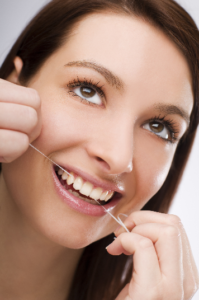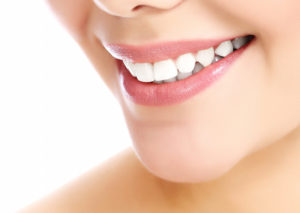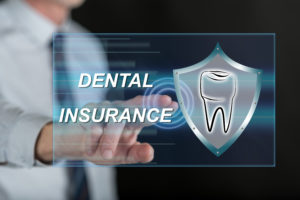 As we draw closer to the opening of our new location, we think it’s the perfect time to share our Westgate Dental Care story.
As we draw closer to the opening of our new location, we think it’s the perfect time to share our Westgate Dental Care story.
Dr. Kics first opened the doors of Westgate Dental Care in September 2002. He was practicing as an associate dentist in Janesville, Wisconsin and wanted to move back to the Chicago area with his wife Teja, toddler Sophia and newborn Ava to be near his roots (he grew up in Hillside). His wife previously taught in D25 at Olive-Mary Stitt school and they always liked the Arlington Heights community, so when a small dental practice was for sale, they jumped at the opportunity.

 When it comes to dental health, it’s important to get your kids to build habits early. Not only will they need it to keep their primary and permanent teeth healthy, but also to avoid cavities. Children are more vulnerable to cavities than any other group, which is why your children’s dentist in Arlington Heights is adamant about celebrating Children’s Dental Health Month. In February, family dentists across the country are doing their part to help parents make brushing a positive and fun experience.
When it comes to dental health, it’s important to get your kids to build habits early. Not only will they need it to keep their primary and permanent teeth healthy, but also to avoid cavities. Children are more vulnerable to cavities than any other group, which is why your children’s dentist in Arlington Heights is adamant about celebrating Children’s Dental Health Month. In February, family dentists across the country are doing their part to help parents make brushing a positive and fun experience.
 Every parent wants their child to have a healthy, white smile to show off! One of the best tools that you can provide for them to properly care for their teeth is a toothbrush that can effectively clean your teeth. Learn more about how to choose the best toothbrush for your little one from a family dentist in Arlington Heights.
Every parent wants their child to have a healthy, white smile to show off! One of the best tools that you can provide for them to properly care for their teeth is a toothbrush that can effectively clean your teeth. Learn more about how to choose the best toothbrush for your little one from a family dentist in Arlington Heights. When you find out that you’re pregnant, the last thing that may come to mind is your teeth. You’re thinking about planning a baby shower, the big day at the hospital, and finally meeting your baby! But in reality, you should also be considering the condition of your teeth and gums because a healthy smile directly correlates to a healthy baby.
When you find out that you’re pregnant, the last thing that may come to mind is your teeth. You’re thinking about planning a baby shower, the big day at the hospital, and finally meeting your baby! But in reality, you should also be considering the condition of your teeth and gums because a healthy smile directly correlates to a healthy baby. It’s easy to think that kids don’t have anything to stress out about. After all, they don’t have to worry about paying bills, going to work, or filing their taxes. You shouldn’t underestimate your child’s level of stress, though. There are plenty of circumstances that can make the young members of your family lose sleep. The stress could even be damaging their oral health! Your
It’s easy to think that kids don’t have anything to stress out about. After all, they don’t have to worry about paying bills, going to work, or filing their taxes. You shouldn’t underestimate your child’s level of stress, though. There are plenty of circumstances that can make the young members of your family lose sleep. The stress could even be damaging their oral health! Your  From a very young age, you have been taught to brush your teeth twice a day, floss daily, and to visit your dentist twice a year. However, as time has gone on, your commitment to your oral health has declined. Despite your history of poor oral hygiene, it is never too late to reinvest in your teeth and gums. As the new year approaches, now it the time to take control of your smile. In addition to revamping your habits at home, it is also time to ask yourself, “where is a dentist near me?”
From a very young age, you have been taught to brush your teeth twice a day, floss daily, and to visit your dentist twice a year. However, as time has gone on, your commitment to your oral health has declined. Despite your history of poor oral hygiene, it is never too late to reinvest in your teeth and gums. As the new year approaches, now it the time to take control of your smile. In addition to revamping your habits at home, it is also time to ask yourself, “where is a dentist near me?” We hope you and your family had a very happy Thanksgiving! With the feast behind us, we’re right in the thick of the holiday season — and there’s no shortage of photo opportunities this time of year. From work parties to once-a-year reunions and everything else, you’re likely to be flashing your grin a lot over the next month. Are your teeth ready? If you’re anything less than 100% satisfied with your smile, keep reading to find out how a visit to the best dentist in Arlington Heights can help with
We hope you and your family had a very happy Thanksgiving! With the feast behind us, we’re right in the thick of the holiday season — and there’s no shortage of photo opportunities this time of year. From work parties to once-a-year reunions and everything else, you’re likely to be flashing your grin a lot over the next month. Are your teeth ready? If you’re anything less than 100% satisfied with your smile, keep reading to find out how a visit to the best dentist in Arlington Heights can help with  For many patients, porcelain veneers are a great option to completely transform smiles without the hassle of numerous cosmetic and restorative treatments. With just one, simple solution you get the flawless smile of your dreams. Once you have that new smile, you may still have some questions. Keep reading to find out what you can expect from your
For many patients, porcelain veneers are a great option to completely transform smiles without the hassle of numerous cosmetic and restorative treatments. With just one, simple solution you get the flawless smile of your dreams. Once you have that new smile, you may still have some questions. Keep reading to find out what you can expect from your  As 2017 is beginning to wrap up, it’s now time to use it or lose it! “Use or lose what?” you’re probably asking…your dental insurance benefits! Many dental insurance plans have annual maximums, and if you haven’t met yours yet, that unused money will not roll over to 2018, so now is the best time to schedule an appointment with your family dentist in Arlington Heights so you can save!
As 2017 is beginning to wrap up, it’s now time to use it or lose it! “Use or lose what?” you’re probably asking…your dental insurance benefits! Many dental insurance plans have annual maximums, and if you haven’t met yours yet, that unused money will not roll over to 2018, so now is the best time to schedule an appointment with your family dentist in Arlington Heights so you can save!